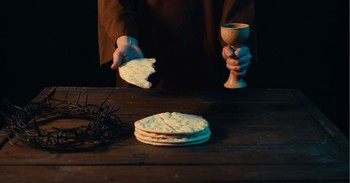A devout Catholic and celebrated but controversial author, Flannery O’Connor was known for her evocative and grotesque short stories and novels. Her eyes were opened wide to the crooked parts of life, and her writing reflected that. Thus, she wrote in a way that was often startling and sometimes offensive to her readers’ sensibilities. In doing so, she was able to present forgiveness and redemption to an increasingly secular society in ways that would leave indelible marks on the minds of those who were willing to see themselves in her stories.
O’Connor shows us there is room in Christian writing for the provocative, the imaginative, and the atypical. She knew what Nathan knew when he rebuked David of his sin (2 Samuel 12), that sometimes stories can speak louder than mere didacticism when communicating God’s truth to broken people.
Important Events in Flannery O’Connor’s Life
Born in Savannah, Georgia, in 1925, Mary Flannery O’Connor would be her parents’ only child. In 1938, her family was forced to move to rural Milledgeville, Georgia, due to her father’s diagnosis of lupus, a disease that would eventually ravage her body as well. The impact of moving to Milledgeville is manifested in her writings, which largely portray life in the countryside.
Her father’s diagnosis was only the start of their family’s battle with lupus’s many unwanted surprises. In 1941, when Mary Flannery was only fifteen, her father, a strong and supportive influence in her life, died from the effects it bore on his body. This traumatic event undoubtedly shaped her worldview, as she was not sheltered from the hardships of living in a broken world. Her writing, which was intended to wake her audience up from a watered-down faith, reflected the impact that his death (and her later lupus diagnosis) had on her theology.
Soon after her father’s death, Mary Flannery began college at Georgia State College for Women, where she spent much of her time drawing political cartoons for the campus newspaper. Upon graduation, she began work on her Master’s at the University of Iowa, intending to become a journalist. While there, she got involved with the Iowa Writer’s Workshop, supervised by Paul Engl. Engle encouraged her to pursue a more creative outlet for her literary gifting. Thus, she graduated with a Master’s of Fine Arts and began her work on her first novel, Wise Blood. During this time, she shortened her name to Flannery, not wanting her gender to influence how her work was perceived.
For a short period, she moved to New York City and then to Ridgefield, Connecticut, to pursue various writing opportunities. After being diagnosed with lupus, she moved back to Milledgeville, where she would write the majority of her published works and where she lived out the rest of her days.
In 1952, Wise Blood was published to harsh reviews. But three years later, Harcourt, Brace and Company published A Good Man is Hard to Find and Other Short Stories. It sold exceptionally well. She would receive many awards for her collection of short stories.
Sadly, at the age of 39, Mary Flannery was afflicted by lupus complications. She passed away on August 3, 1964. The next day, she was buried next to her father in Milledgeville. Much of what we have of her writings was published posthumously.
Did Flannery O’Connor See Herself as a Christian Writer?
O’Connor had very strong ideas about what it means to be a “Christian author.” In fact, she would be dismayed to be grouped with the kind of writers many of us imagine when we use that term.
She gives her thoughts on modern Christian writing in essays, lectures, and articles published posthumously in the collection Mystery and Manners. O’Connor discusses how she has unashamedly communicated about issues she found particularly troubling. In fact, she critiques authors who try to cheat this method by citing their religion:
“. . . the sorry religious novel comes about when the writer supposed that because of his belief, he is somehow dispensed from the obligation to penetrate concrete reality. He will say that the eyes of Christ or of the Bible or of his particular theology have already done the seeing for him, and that his business is to rearrange this essential vision into satisfying patterns, getting himself as little dirty in the process as possible” (163).
No one could accuse O’Connor of avoiding the dirt and filth of the real world. In that sense, she would not have considered herself a Christian writer. But she would unquestionably identify as a writer driven by the gospel. Her primary goal as a writer was to wake up a sleeping culture to the truth of the gospel, the offer of grace, and the beauty of forgiveness. Above all else, O’Connor saw her life as defined and driven by Christ’s redemption. That was the lens through which she assessed her world and by which she judged everything else. Thus, all of her writing was infused with Christian thought and symbolism.
Her audience was “the people who think God is dead,” and she intended to make the reality of Christ known to them. This was her primary reason for using such disconcerting portrayals of burdened and sin-afflicted people (aka all of us). “To the hard of hearing you shout, and for the almost-blind you draw large and startling figures” (Mystery and Manners, 34). In a world where the abnormal had become normal, she recognized her need to depict the spiritual reality of our souls apart from Christ in a manner that would grasp the most hardened hearts’ attention. She wrote about the real. She wrote in life’s trenches so those stumbling around in them could see their need for a Savior.
Top 10 Flannery O’Connor Works to Read
1. Wise Blood. Though she produced a prodigious amount in her short life, O’Connor only published two novels. Her first, Wise Blood, focuses on themes of sin and redemption. Critics have praised its wit, skill, and comedy.
2. The Violent Bear It Away. Her second novel focuses more on man’s struggle between faith and reason. The novel shows her remarkable ability to unveil internal struggles common to humanity.
3. “A Good Man is Hard to Find.” This short story is O’Connor’s best-known work and the one that launched her writing career. It exposes the harsh realities of a “Christ-haunted South” during the mid-1900s.
4. “Revelation.” As one of her most overtly religious short stories, “Revelation” uncovers pride’s folly and reveals hope’s true nature.
5. “Good Country People.” This short story might very well be her second most famous work, and understandably so. In it, O’Connor uses highly unexpected characters to show where Jesus meets all of us: in the mess of real life.
6. “The Life You Save Might Be Your Own.” At the heart of this profound short story is a picture of a decision we will all have to make when confronted with a conviction of our sin: to choose life or death.
7. “Greenleaf.” Using pronounced symbolism, O’Connor expertly explores the misplaced hierarchical beliefs foundational to the classism she witnessed growing up in Milledgeville.
8. “The River.” In a provocative commentary on the juxtaposition between the Kingdom of Heaven and the reality of life on earth, O’Connor uses the innocence of a young boy, the preaching of an earnest man, the skepticism of another, and a river to portray the mystification that many people feel in their pursuit of Heaven on earth.
9. “The Lame Shall Enter First.” In one of O’Connor’s most tragic stories, she explores themes of grief, empathy, and moral blindness through the relationship of a widowed father, his neglected son, and a manipulative young boy with a disability.
10. “Everything that Rises Must Converge.” Published after her passing, O’Connor once again reveals the intrinsic racism of her Southern roots and manifests the many ways that it bears its ugly head, even in the most unsuspecting individuals.
Flannery O’Connor’s Why Do the Heathen Rage? by Jessica Hooten Wilson deserves an honorary mention here. The book includes over 378 pages of O’Connor’s work, which was not released recently. The book recovers O’Connor’s third novel, left unfinished at her death, with commentary by Wilson.
Great Books and Movies about Flannery O’Connor
1. Wildcat directed by Ethan Hawke. A new biopic that explores the period when O’Connor decided to move back to Milledgeville. It premiered in multiple film festivals but has yet to be released to the general public.
2. Flannery directed by Elizabeth Coffman and Mark Bosco. This documentary visually represents her life and the process of her literary development.
3. Uncommon Grace: The Life of Flannery O’Connor directed by Bridget Kurt. This film offers its viewers a look at the various influences in her life that shaped her writing career.
4. Flannery O’Connor: Fiction Fired by Faith by Angela Alaimo O’Donnell. If you want an introduction to the connection between O’Connor’s writings and her Catholic faith, this is the book to start with.
5. Flannery: A Life of Flannery O’Connor by Brad Gooch. Gooch expertly traces O’Connor’s development as an author and a Christian, bringing life to the trials and experiences that shaped the stories that define Flannery O’Connor in our minds today.
6. Flannery O’Connor: Writing a Theology of Disabled Humanity by Timothy J. Basselin. This book fits within the field of disability studies, exploring the interaction between O’Connor’s own disability, her use of disabled persons in her work, and the general theme of the literary grotesque.
7. The Terrible Speed of Mercy: A Spiritual Biography of Flannery O’Connor by Jonathan Rogers. With an eye for O’Connor’s humor and wit, Rogers considers how her ardent Catholicism and ever-present suffering informed her life.
8. Giving the Devil His Due: Demonic Authority in the Fiction of Flannery O’Connor and Fyodor Dostoevsky by Jessica Hooten Wilson. Wilson explores many of O’Connor’s short stories and Dostoevsky’s novel The Brothers Karamazov, considering their common spiritual themes, particularly the danger of living as lukewarm Christians.
9. A Subversive Gospel: Flannery O’Connor and the Reimagining of Beauty, Goodness, and Truth by Michael Mears Bruner. Bruner’s work guides readers through an exploration of O’Connor’s writings as they reveal her conception of beauty, goodness, and truth as informed by the gospel. Bruner also considers how her conception contrasted with the common understanding of those concepts in her Southern Christian context.
10. Flannery O’Connor and the Christ-Haunted South by Ralph C. Wood. This is the book to read to understand O’Connor’s cultural and theological context fully. Wood offers readers a look into O’Connor’s life and how cultural Christianity in the American South informs her work.
Photo Credit: © Getty Images/Aleksandr Koltyrin

This article is part of our People of Christianity catalog that features the stories, meaning, and significance of well-known people from the Bible and history. Here are some of the most popular articles for knowing important figures in Christianity:
How Did the Apostle Paul Die?
Who are the Nicolaitans in Revelation?
Who Was Deborah in the Bible?
Who Was Moses in the Bible?
King Solomon's Story in the Bible
Who Was Lot's Wife in the Bible?
Who Was Jezebel in the Bible?
Who Was the Prodigal Son?



